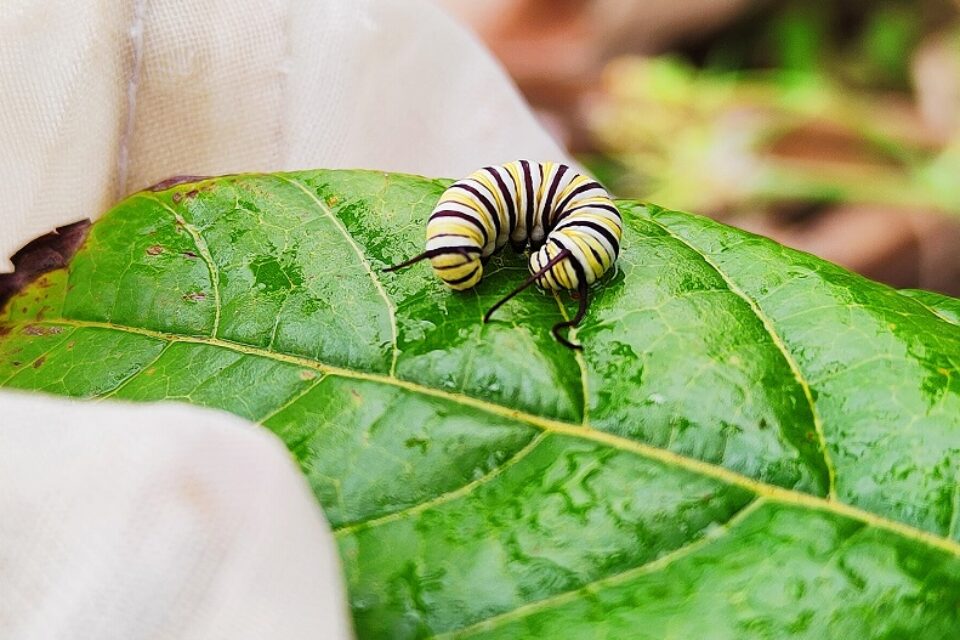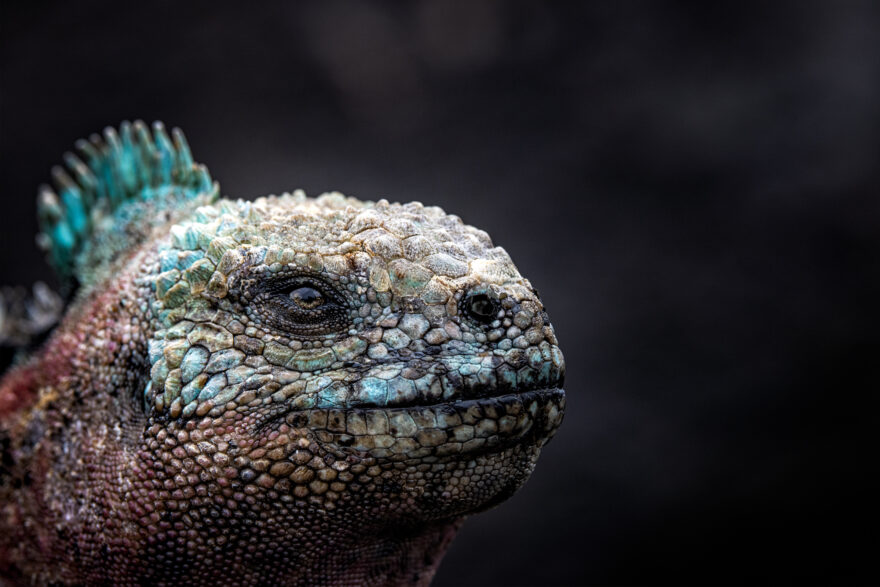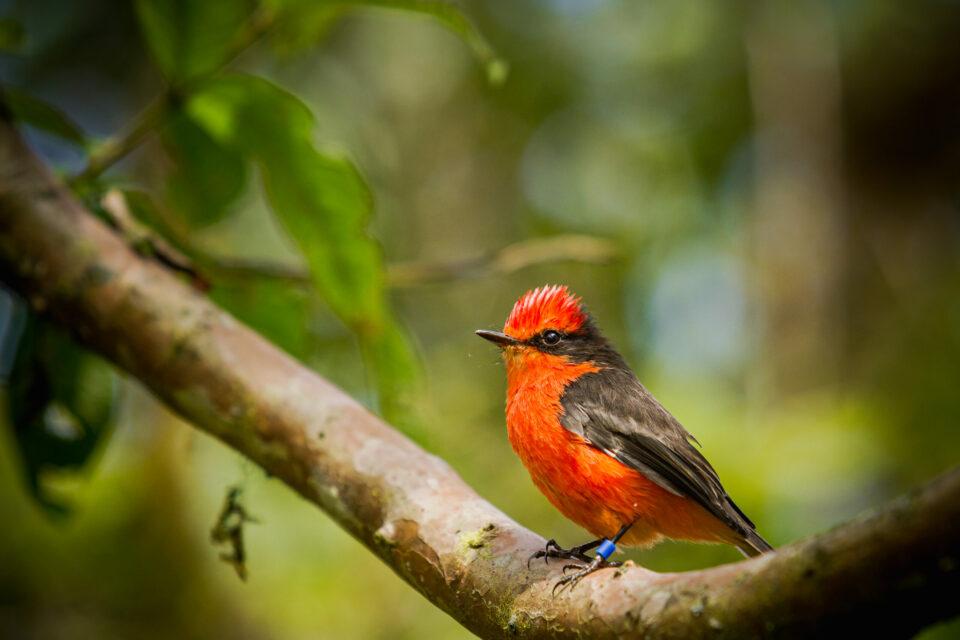

The introduced smooth-billed ani
Smooth-billed anis, introduced to the Galapagos Islands in the 1960s, are having a negative impact on a number of the Archipelago's native species.
The smooth-billed ani (Crotophaga ani) was introduced to Galapagos in the 1960s. In a new study published in Biological Conservation, my co-authors and I investigated the introduction of this species, and revealed the numerous impacts it is having on native species and ecosystems.
I first visited Galapagos as a tourist in 2013 and became fascinated with this loud, social, black bird, the smooth-billed ani that I kept encountering. I asked around and discovered that they were introduced and thought to be having many negative impacts but that little research had been done on them. Having only recently finished my Bachelors, however, I didn’t yet feel able to set up a project. Two years later, I managed to return to the Islands, gain the support of the Charles Darwin Foundation (CDF) and the Galapagos National Park and successfully apply for a small research grant. Since then, I have undertaken three fieldwork trips to study anis in Galapagos, one of which, amazingly, was part-funded by the GCT when I won the 2016 Galapagos Day raffle!
The first task I set myself was to track down all published and unpublished research on anis in Galapagos and undertake a full review. With the help of three co-authors and the collaboration of CDF, this has just been published in Biological Conservation. In it, we report on all that is known about the ani’s introduction, subsequent spread, impacts on native wildlife and previous eradication attempts.
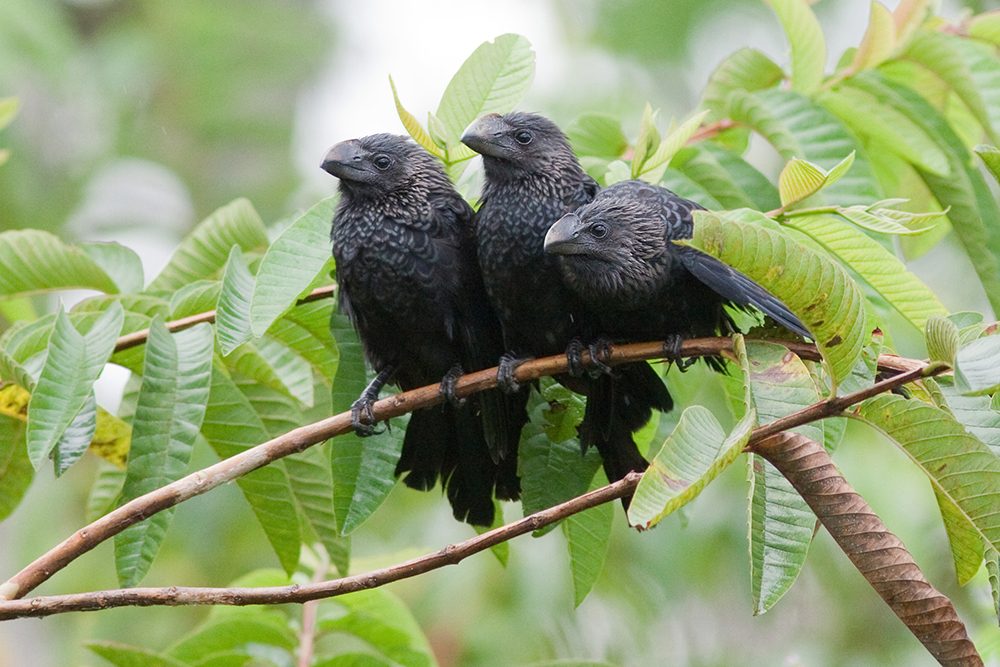
A group of three smooth-billed anis in Galapagos © Michael Dvorak
Here are some of our findings:
Anis were most likely introduced deliberately by local farmers. A few years earlier, ticks had been accidentally brought to the Islands with a batch of cattle. This quickly became a heavy infestation, resulting in many cattle dying. Having seen anis feeding on ticks in continental South America, it is thought that the farmers released some on Isabela, the largest island in the Archipelago. Over the next fifty years, the birds spread to all but one of the major islands, Darwin, and reached an estimated population of 250,000.
Unfortunately, instead of feeding on the ticks, anis feed on a variety of native wildlife, including the nestlings of the iconic and endemic Darwin’s finches. They have also been reported robbing the nests of native yellow warblers and endemic mockingbirds. Additionally, the territorial nature of the anis results in them killing adult mockingbirds. As several Galapagos finch and mockingbird species are listed as endangered or critically endangered, this is extremely concerning. Anis are also catching Galapagos lava lizards and large numbers of endemic insects, including the major pollinator and only native bee, the Galapagos carpenter bee.
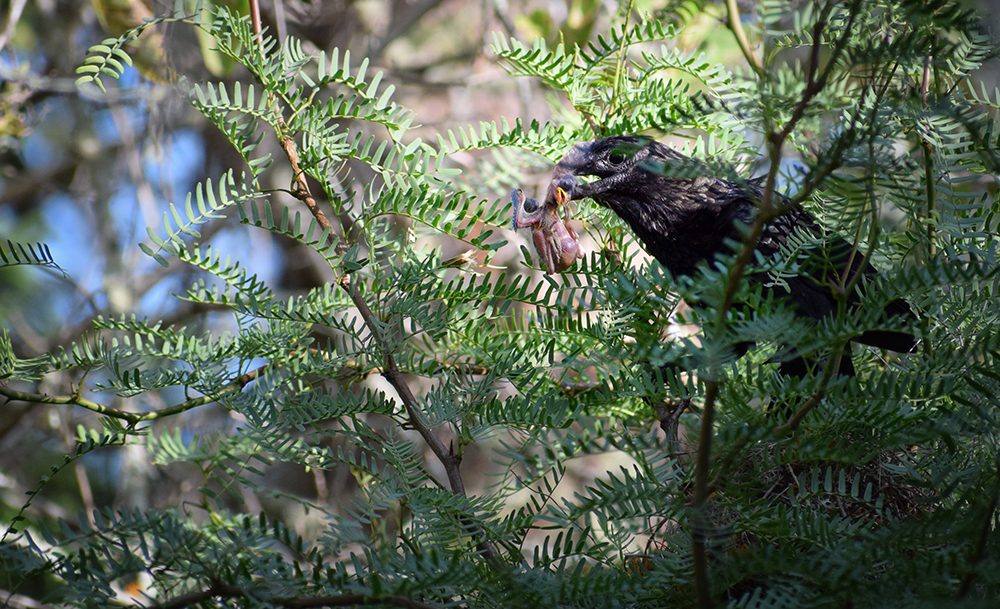
A smooth-billed ani with a nestling it had just taken from a nest, believed to be that of a small ground finch, on Santa Cruz © Joshua Lynton-Jenkins
In addition, anis are effective dispersers of the seeds of the highly damaging invasive blackberry. They are also hosts of the invasive fly Philornis downsi, a parasite which causes high chick mortality in many native bird species and is a major threat to the mangrove finch, the bird most at risk of extinction in Galapagos. In addition, anis are possibly contributing to the spread of multiple avian diseases.
As a result, many scientists and local people feel anis should be removed from the Islands. However, no effective method has yet been identified and eradication programs are extremely costly. In addition, it is not clear whether the scale of their impacts is large enough to warrant eradication. Also, anis are feeding on a range of other introduced species, including house mice, rats, wasps, cockroaches and other insects. It is possible that removal of the anis might lead to inflation of the populations of these other aliens.
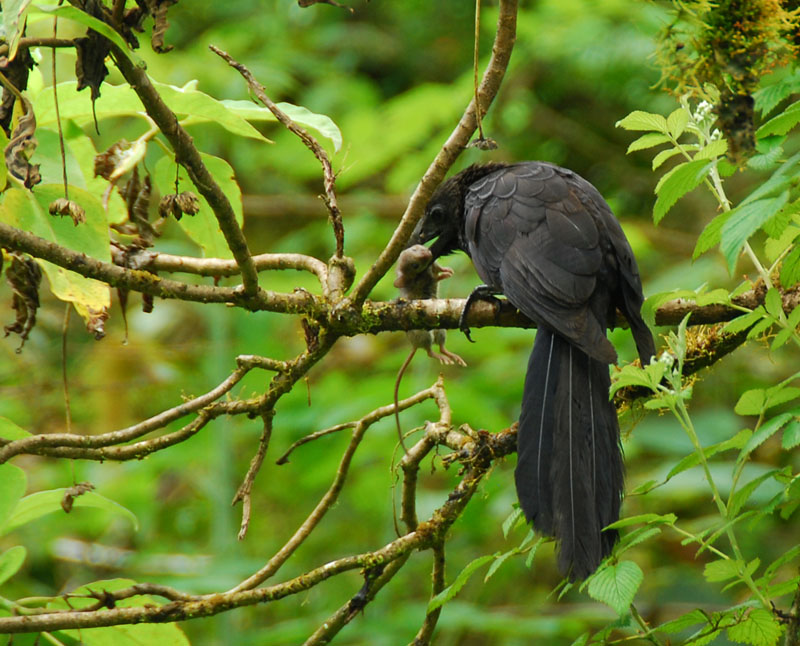
A smooth-billed ani with an introduced mouse in its bill which it had caught alive and killed © Luis Die Dejean
We concluded that urgent research was needed to establish the extent of the impacts of anis in Galapagos and therefore their priority for eradication. If eradication or control is attempted, we highlighted the need for research into effective methods to do so, as there have been several failed attempts previously.
As well as producing this review, I have designed a new trap for catching anis to enable easier research and will be publishing on this shortly. My next step is to seek funding for wide-scale analyses of ani diet and interactions with other introduced species across multiple islands and habitats. This will allow better understanding and quantification of their impacts and enable informed decisions on their management to be made.
GCT are working to reduce the impact of invasive species on the unique wildlife of Galapagos, including through our Restoring Floreana programme.
Citation: Cooke S. C., Haskell, L. E., van Rees, C. B. & Fessl, B. 2019. A review of the introduced smooth-billed ani Crotophaga ani in Galápagos. Biological Conservation, 229.
DOI: 10.1016/j.biocon.2018.11.005.
Link: https://www.sciencedirect.com/science/article/pii/S0006320718313065
Related articles

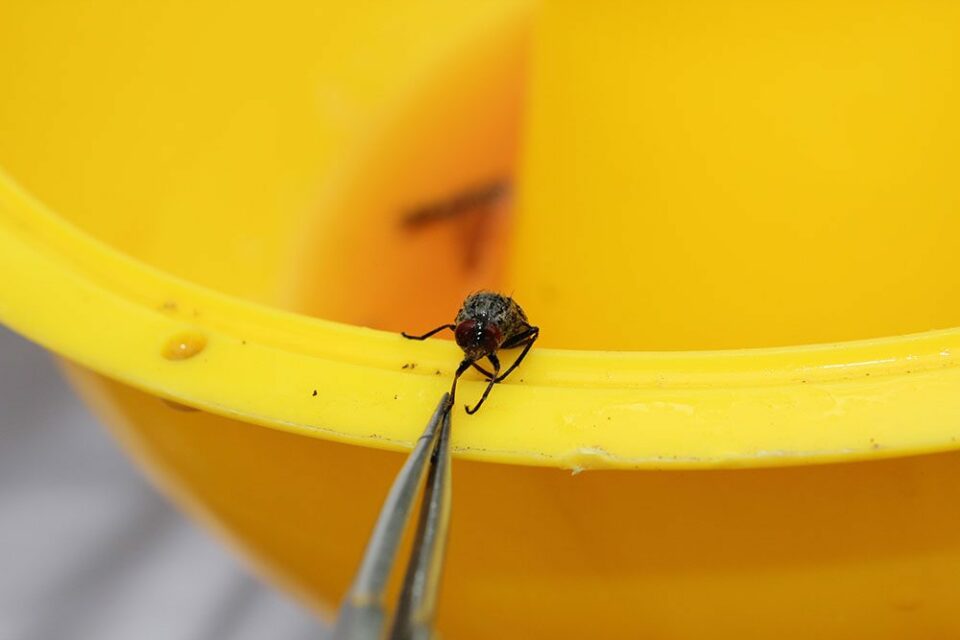
How do we solve the problem of invasive species in Galapagos?
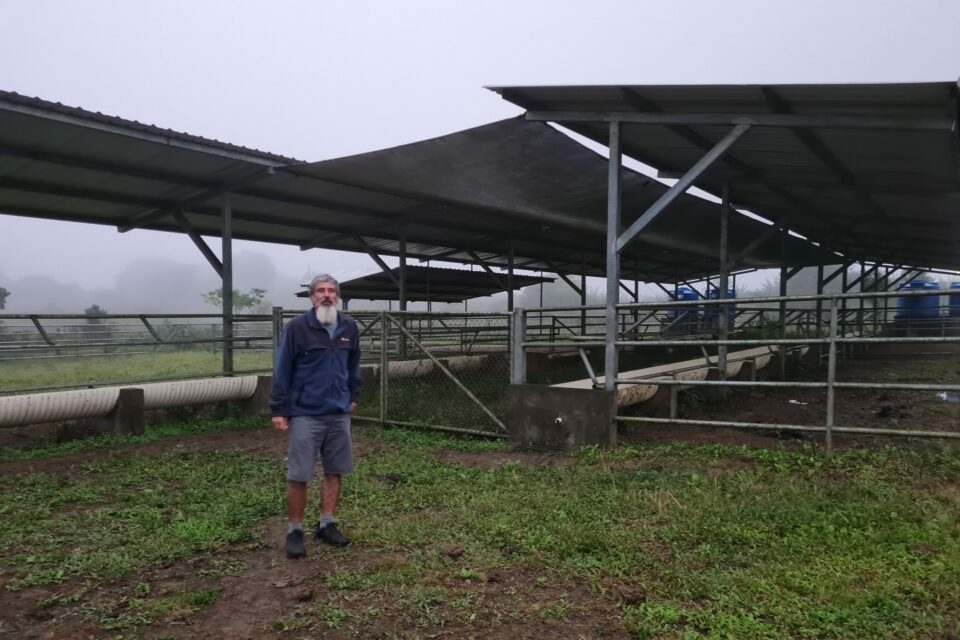
Restoring Floreana: A local perspective
